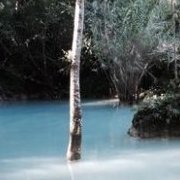Translate Plaque At Vishnu Shrine
-
Recently Browsing 0 members
- No registered users viewing this page.
-
Topics
-
-
Popular Contributors
-
-
Latest posts...
-
354
UK Mohammed Fahir Amaaz & Muhammad Amaad on Trial over Manchester Airport Clash
Seriously? "A man punching police officers"? Not sure why you're playing it down so much. Two men beat the crap out of several police officers at a major airport (heightened security risks etc.). All caught on video. This is one of the most talked about and eagerly awaited trials in recent history! Why should we need to use the search function on BBC website to find it? -
132
Pattaya Condos: History and Future
Perhaps you can explain how foreign condo owners actually own the land their condo block sits on? -
24
Adam Schiff. Mortgage fraudster prepares to meet justice
What went around is coming back to haunt them, legitimately! Now only if their activists friends pretending to be journalists can cover the upcoming events with the same stabbing vigorous reporting. I’d live to see Pierro assign it to a Missouri jurisdiction. -
16
More discrimination ....
Not sure where you got that from, but I'm straight, and in the famous words of Jerry Seinfeld, if one was gay, "not that there's anything wrong with that." Simply pointing out that many hotels in Pattaya, if they charged their customers a joiner fee to bring back bar girls, many customers would stay at a hotel that didn't charge, me include. -
86
Kissing on the mouth
’ve a curated collection of grade A1 twonkers firmly on ignore – the sort of tireless dullards whose comments I genuinely can’t be arsed to wade through. Think Harris, Newbee, Yagoda, Ralf... Every so often I foolishly lift the veil and peek at one of their posts, only to be reminded – with clockwork precision – why the ignore list exists. Now, in Malky's defence, he’s a different beast entirely. Utterly absurd, yes, but entertainingly so – like a drunk trying to win a debate with a streetlamp. He absorbs flak with unexpected tolerance and often manages a cheeky retort or a flailing but valiant jab in return. He’s not quite as thick as his posts would suggest, I'm entertained.... I'm shuffling somewhat ungracefully into my crusty old geezer phase myself... and I must say, my sympathies towards your particular brand of desperation are, slowly but surely, evolving. Truth be told, I’ve a certain fondness for many of the older, more seasoned hands around here. Thus, its not age that bothers me in the slightest – it’s a deep-seated intolerance for weapons-grade twassers that I find increasingly hard to mask. Which, I suspect, might explain why you're replying in this fashion – perhaps the residual sting from being on the receiving end of one of my responses to an especially inane post in the past perhaps?... .... I genuinely couldn’t say – not out of politeness, but because I honestly can’t remember ever engaging with you. Your presence, such as it is, appears to have achieved the rare feat of bland mediocrity thats too easy forget entirely... ... At least Malcy is memorable - so good on you for worshiping and protecting him !!!... -
86
Report Race Against Time: Bangkok May Be Below Sea Level by 2030
Off topic deflection posts about the USA and the replies have been removed.
-
-
Popular in The Pub






.thumb.jpeg.d2d19a66404642fd9ff62d6262fd153e.jpeg)







Recommended Posts
Create an account or sign in to comment
You need to be a member in order to leave a comment
Create an account
Sign up for a new account in our community. It's easy!
Register a new accountSign in
Already have an account? Sign in here.
Sign In Now